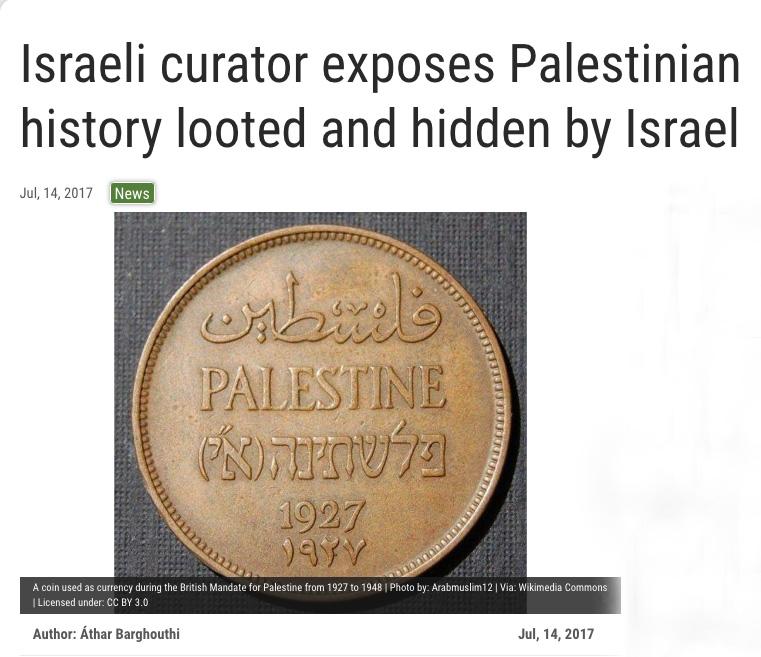Source:
https://www.welcometopalestine.com/
____________________________
An article was published by Haaretz this month titled “Why Are Countless Palestinian Photos and Films Buried in Israeli Archives?”
It tells the story of Dr. Rona Sela, a curator and art historian, and lecturer at Tel Aviv University. Sela researched the history of Zionist photography for years and saw how Zionist visual propaganda was created.
In an effort to learn more about the Palestinian narrative she began looking for Palestinian visual history. She soon discovered material that was seized by the IDF from Palestinians during various raids and wars. The material provides an alternative to Zionist history which denied the existence of Palestinians before Israel was created in 1948.
In the IDF archives, Israel has 38,000 films, 2.7 million photographs, 96,000 audio recordings and 46,000 maps and aerial photos.
These are all scattered amongst Zionist archives in Israel. They have been collected since 1948 under orders from David Ben-Gurion, the first Prime Minister of Israel. Two of the items are labelled “The History of Palestine from 1919” and “Depiction of the IDF’s Treatment and Harsh Handling of Palestinians in the Territories.” These two collections are stored in the central archive in Tel Hashomer, outside Tel Aviv.
Most of the items were looted and confiscated in the 1982 Lebanon war. They include never-before seen films seized in Beirut, which “were erased from consciousness and history” as Sela said. She recently made her first film titled “Looted and Hidden: Palestinian Archives in Israel”.
In her film, Sela also includes her encounter with Khadijeh Habashneh, a Jordan-based Palestinian filmmaker and former head of the Palestinian Cinema Institute (PCI). The PCI was active from the end of the 1960s until the early 80s. The Institute’s archive documented Palestinians’ suffering in refugee camps, resistance and battles against the IDF, as well as everyday life from even before 1948.
The archive, based in Lebanon by 1982, disappeared after the IDF entered Beirut. Sela provides testimonies from numerous soldiers of looting many items and depositing them in Israeli archives. After years of legal battles, she was permitted to see more archives, some of which belonging to Habashneh. She unveiled many more of these items in her books, articles and catalogues, and in her recent film.
Dr. Gish Amit, an expert on Zionist cultural aspects at Ben-Gurion University of the Negev, conducted similar research. The study exposes Israel’s attempt to also hide written material seized from Palestinians. According to Haaretz, Israel’s National Library holds about 6,500 Palestinian books and manuscripts which were taken from homes whose owners left in 1948. They were collected by Israeli soldiers and The National Library.
Sela compared Israel’s erasure of history to that of the Nazis. She said “as the daughter of Holocaust survivors. I grew up in a home without photographic historical memory. Nothing. My history starts only with the meeting of my parents, in 1953. It’s only from then that we have photos. Before that – nothing.”
When asked what should be done with the material, she said it had to be returned just as Israel fights to return what the Nazis looted from Jews in the holocaust. “The historical story is different, but by the same criterion, practice what you preach. These are cultural and historical materials of the Palestinian people”, she added.
In her opinion, Israel wants not only geographic control over Palestine, but control over culture and consciousness as well. Seizing visual history prevents the construction of identity, and what Israel did was seize the history of a whole people.
Sela admits that there is much more to be unveiled, and believes that the “erased narrative” should be restored into history books.

